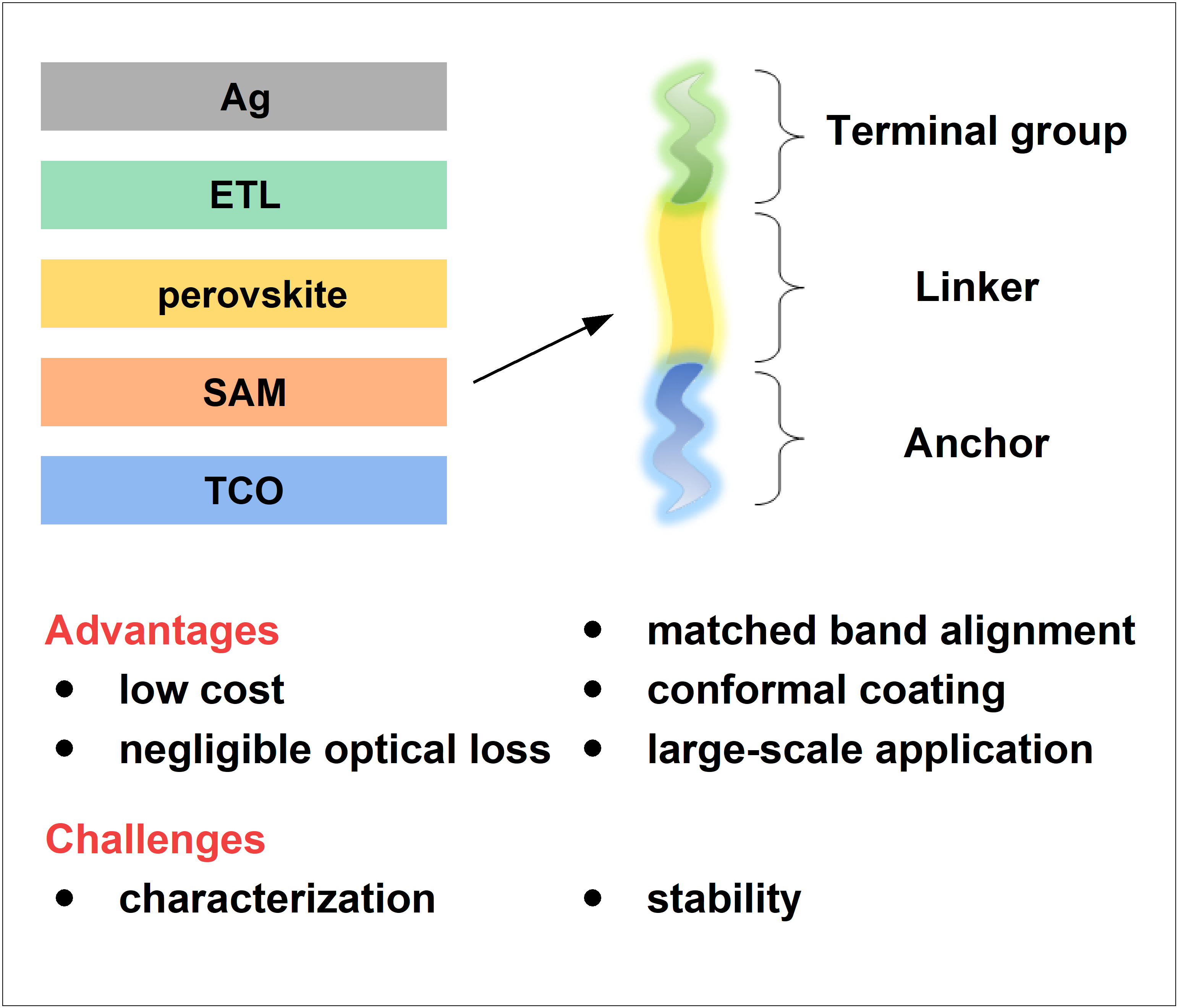| [1] |
Min H et al 2021 Perovskite solar cells with atomically coherent interlayers on SnO2 electrodes Nature 598 444–50
|
| [2] |
Kim M et al 2022 Conformal quantum dot–SnO2 layers as electron transporters for efficient perovskite solar cells Science 375 302–6
|
| [3] |
Li X, Zhang W, Guo X, Lu C, Wei J and Fang J 2022 Constructing heterojunctions by surface sulfidation for efficient inverted perovskite solar cells Science 375 434–7
|
| [4] |
Jiang Q et al 2022 Surface reaction for efficient and stable inverted perovskite solar cells Nature 611 278–83
|
| [5] |
Zhu Y, Hu M, Xu M, Zhang B, Huang F, Cheng Y-B and Lu J 2022 Bilayer metal halide perovskite for efficient and stable solar cells and modules Mater. Futures 1 042102
|
| [6] |
Yan W, Ye S, Li Y, Sun W, Rao H, Liu Z, Bian Z and Huang C 2016 Hole-transporting materials in inverted planar perovskite solar cells Adv. Energy Mater. 6 1600474
|
| [7] |
Li L, Wu Y, Li E, Shen C, Zhang H, Xu X, Wu G, Cai M and Zhu W-H 2019 Self-assembled naphthalimide derivatives as an efficient and low-cost electron extraction layer for n-i-p perovskite solar cells Chem. Commun. 55 13239–42
|
| [8] |
Shen C, Wu Y, Zhang H, Li E, Zhang W, Xu X, Wu W, Tian H and Zhu W 2019 Semi-locked tetrathienylethene as a building block for hole-transporting materials: toward efficient and stable perovskite solar cells Angew. Chem. Int. Ed. 58 3784–9
|
| [9] |
Guo H, Zhang H, Shen C, Zhang D, Liu S, Wu Y and Zhu W-H 2021 A coplanar π-extended quinoxaline based hole-transporting material enabling over 21% efficiency for dopant-free perovskite solar cells Angew. Chem. Int. Ed. 60 2674–9
|
| [10] |
Ye F, Zhang D, Xu X, Guo H, Liu S, Zhang S, Wu Y and Zhu W-H 2021 Anchorable perylene diimides as chemically inert electron transport layer for efficient and stable perovskite solar cells with high reproducibility Sol. RRL 5 2000736
|
| [11] |
Wu S et al 2020 Modulation of defects and interfaces through alkylammonium interlayer for efficient inverted perovskite solar cells Joule 4 1248–62
|
| [12] |
Jeng J-Y, Chiang Y-F, Lee M-H, Peng S-R, Guo T-F, Chen P and Wen T-C 2013 CH3NH3PbI3 perovskite/fullerene planar-heterojunction hybrid solar cells Adv. Mater. 25 3727–32
|
| [13] |
Nie W et al 2018 Critical role of interface and crystallinity on the performance and photostability of perovskite solar cell on nickel oxide Adv. Mater. 30 1703879
|
| [14] |
Stolterfoht M et al 2018 Visualization and suppression of interfacial recombination for high-efficiency large-area pin perovskite solar cells Nat. Energy 3 847–54
|
| [15] |
Li Z, Li B, Wu X, Sheppard S A, Zhang S, Gao D, Long N J and Zhu Z 2022 Organometallic-functionalized interfaces for highly efficient inverted perovskite solar cells Science 373 416–20
|
| [16] |
Wang S et al 2022 Critical role of removing impurities in nickel oxide on high-efficiency and long-term stability of inverted perovskite solar cells Angew. Chem. Int. Ed. 61 e202116534
|
| [17] |
Magomedov A, Al-Ashouri A, Kasparavicˇius E, Strazdaite S, Niaura G, Joˇst M, Malinauskas T, Albrecht S and Getautis V 2018 Self-assembled hole transporting monolayer for highly efficient perovskite solar cells Adv. Energy Mater. 8 1801892
|
| [18] |
Al-Ashouri A et al 2019 Conformal monolayer contacts with lossless interfaces for perovskite single junction and monolithic tandem solar cells Energy Environ. Sci. 12 3356–69
|
| [19] |
Yalcin E, Can M, Rodriguez-Seco C, Aktas E, Pudi R, Cambarau W, Demic S and Palomares E 2019 Semiconductor self-assembled monolayers as selective contacts for efficient PiN perovskite solar cells Energy Environ. Sci. 12 230–7
|
| [20] |
Li E, Bi E, Wu Y, Zhang W, Li L, Chen H, Han L, Tian H and Zhu W 2020 Synergistic coassembly of highly wettable and uniform hole-extraction monolayers for scaling-up perovskite solar cells Adv. Funct. Mater. 30 1909509
|
| [21] |
Isikgor F H, Zhumagali S, T, Merino L V, De B M, McCulloch I and De Wolf S 2023 Molecular engineering of contact interfaces for high-performance perovskite solar cells Nat. Rev. Mater. 8 89–108
|
| [22] |
Wang Y et al 2020 Teaching an old anchoring group new tricks: enabling low-cost, eco-friendly hole-transporting materials for efficient and stable perovskite solar cells J. Am. Chem. Soc. 142 16632–43
|
| [23] |
Al-Ashouri A et al 2020 Monolithic perovskite/silicon tandem solar cell with >29% efficiency by enhanced hole extraction Science 370 1300–9
|
| [24] |
Azmi R et al 2022 Damp heat–stable perovskite solar cells with tailored-dimensionality 2D/3D heterojunctions Science 376 73–77
|
| [25] |
Liu J et al 2021 28.2%-efficient, outdoor-stable perovskite/silicon tandem solar cell Joule 5 3169–86
|
| [26] |
Datta K, Wang J, Zhang D, Zardetto V, Remmerswaal W H M, Weijtens C H L, Wienk M M and Janssen R A J 2021 Monolithic all-perovskite tandem solar cells with minimized optical and energetic losses Adv. Mater. 34 2110053
|
| [27] |
Qin S et al 2022 Constructing monolithic perovskite/organic tandem solar cell with efficiency of 22.0% via reduced open-circuit voltage loss and broadened absorption spectra Adv. Mater. 34 2108829
|
| [28] |
Jiang W, Li F, Li M, Qi F, Lin F R and Jen A K-Y 2022 π-expanded carbazoles as hole-selective self-assembled monolayers for high-performance perovskite solar cells Angew. Chem. Int. Ed. 61 e202213560
|
| [29] |
Lin X et al 2017 Dipole-field-assisted charge extraction in metal-perovskite-metal back-contact solar cells Nat. Commun. 8 613
|
| [30] |
Ullah A et al 2021 Novel phenothiazine-based self-assembled monolayer as a hole selective contact for highly efficient and stable p-i-n perovskite solar cells Adv. Energy Mater. 12 2103175
|
| [31] |
Zhang S, Wu R, Mu C, Wang Y, Han L, Wu Y and Zhu W-H 2022 Conjugated self-assembled monolayer as stable hole-selective contact for inverted perovskite solar cells ACS Mater. Lett. 4 1976–83
|
| [32] |
Guo H, Liu C, Hu H, Zhang S, Ji X, Cao X, Ning Z, Zhu W-H, Tian H and Wu Y 2022 Neglected acidity pitfall: boric acid-anchoring hole selective contact for perovskite solar cells Natl. Sci. Rev. (https://doi.org/10.1093/nsr/nwad057)
|
| [33] |
Zhang H, Wu Y, Zhang W, Li E, Shen C, Jiang H, Tian H and Zhu W-H 2018 Low cost and stable quinoxaline-based hole-transporting materials with a D–A–D molecular configuration for efficient perovskite solar cells Chem. Sci. 9 5919–28
|
| [34] |
Li E et al 2019 Efficient p-i-n structured perovskite solar cells employing low-cost and highly reproducible oligomers as hole transporting materials Sci. China Chem. 62 767–74
|
| [35] |
Xu X, Ji X, Chen R, Ye F, Liu S, Zhang S, Chen W, Wu Y and Zhu W-H 2022 Improving contact and passivation of buried interface for high-efficiency and large-area inverted perovskite solar cells Adv. Funct. Mater. 32 2109968
|
| [36] |
Chen R et al 2022 Robust hole transport material with interface anchors enhances the efficiency and stability of inverted formamidinium–cesium perovskite solar cells with a certified efficiency of 22.3% Energy Environ. Sci. 15 2567–80
|
| [37] |
Zhang M, Guo X, Ma W, Ade H and Hou J 2014 A polythiophene derivative with superior properties for practical application in polymer solar cells Adv. Mater. 26 5880–5
|
| [38] |
Stolterfoht M, Wolff C M, Amir Y, Paulke A, Perdigón-Toro L, Caprioglio P and Neher D 2017 Approaching the fill factor Shockley–Queisser limit in stable, dopant-free triple cation perovskite solar cells Energy Environ. Sci. 10 1530–9
|
| [39] |
Gharibzadeh S et al 2021 Two birds with one stone: dual grain-boundary and interface passivation enables >22% efficient inverted methylammonium-free perovskite solar cells Energy Environ. Sci. 14 5875–93
|
| [40] |
Li E, Liu C, Lin H, Xu X, Liu S, Zhang S, Yu M, Cao X, Wu Y and Zhu W 2021 Bonding strength regulates anchoring-based self-assembly monolayers for efficient and stable perovskite solar cells Adv. Funct. Mater. 31 2103847
|
| [41] |
Peng J et al 2021 Nanoscale localized contacts for high fill factors in polymer-passivated perovskite solar cells Science 371 390–5
|
| [42] |
Niu T et al 2021 D-A-π-A-D-type dopant-free hole transport material for low-cost, efficient, and stable perovskite solar cells Joule 5 249–69
|
| [43] |
Jeong J et al 2021 Pseudo-halide anion engineering for α-FAPbI3 perovskite solar cells Nature 592 381–5
|
| [44] |
Peng J et al 2022 Centimetre-scale perovskite solar cells with fill factors of more than 86% Nature 601 573–8
|
| [45] |
Deng X, Qi F, Li F, Wu S, Lin F R, Zhang Z, Guan Z, Yang Z, Lee C and Jen A K - Y 2022 Hole-selective contact for high-performance inverted perovskite solar cells with optimized recombination loss and long-term stability Angew. Chem. Int. Ed. 61 e202203088
|
| [46] |
Levine I et al 2021 Charge transfer rates and electron trapping at buried interfaces of perovskite solar cells Joule 5 2915–33
|
| [47] |
Stolterfoht M et al 2019 The impact of energy alignment and interfacial recombination on the internal and external open-circuit voltage of perovskite solar cells Energy Environ. Sci. 12 2778–88
|
| [48] |
Canil L et al 2021 Tuning halide perovskite energy levels Energy Environ. Sci. 14 1429–38
|
| [49] |
Xiang Y, Guo H, Cai Z, Jiang C, Zhu C, Wu Y, Zhu W-H and Chen T 2022 Dopant-free hole-transporting materials for stable Sb2 (S,Se) 3 solar cells Chem. Commun. 58 4787–90
|
| [50] |
Guo H, Zhang H, Liu S, Zhang D, Wu Y and Zhu W-H 2022 Efficient and stable methylammonium-free tin-lead perovskite solar cells with hexaazatrinaphthylene-based hole-transporting materials ACS Appl. Mater. Interfaces 14 6852–8
|
| [51] |
Lange I et al 2014 Tuning the work function of polar zinc oxide surfaces using modified phosphonic acid self-assembled monolayers Adv. Funct. Mater. 24 7014–24
|
| [52] |
Ou Q-D, Li C, Wang Q-K, Li Y-Q and Tang J-X 2017 Recent advances in energetics of metal halide perovskite interfaces Adv. Mater. Interfaces 4 1600694
|
| [53] |
Lin X, Raga S R, Chesman A S R, Ou Q, Jiang L, Bao Q, Lu J, Cheng Y-B and Bach U 2020 Honeycomb-shaped charge collecting electrodes for dipole-assisted back-contact perovskite solar cells Nano Energy 67 104223
|
| [54] |
Roß M et al 2021 Co-evaporated formamidinium lead iodide based perovskites with 1000 h constant stability for fully textured monolithic perovskite/silicon tandem solar cells Adv. Energy Mater. 11 2101460
|
| [55] |
Zhang D, Zhang H, Guo H, Ye F, Liu S and Wu Y 2022 Stable α-FAPbI3 in inverted perovskite solar cells with efficiency exceeding 22% via a self-passivation strategy Adv. Funct. Mater. 32 2200174
|
| [56] |
Dai Z, Yadavalli S K, Chen M, Abbaspourtamijani A, Qi Y and Padture N P 2021 Interfacial toughening with self-assembled monolayers enhances perovskite solar cell reliability Science 372 618–22
|
| [57] |
Liu J et al 2022 Efficient and stable perovskite-silicon tandem solar cells through contact displacement by MgFx Science 377 302–6
|
| [58] |
Abdollahi Nejand B et al 2022 Scalable two-terminal all-perovskite tandem solar modules with a 19.1% efficiency Nat. Energy 7 620–30
|
| [59] |
Li L et al 2022 Flexible all-perovskite tandem solar cells approaching 25% efficiency with molecule-bridged hole-selective contact Nat. Energy 7 708–17
|
| [60] |
Farag A et al 2023 Evaporated self-assembled monolayer hole transport layers: lossless interfaces in p-i-n perovskite solar cells Adv. Energy Mater. 13 2203982
|
| [61] |
Aktas E et al 2021 Understanding the perovskite/self-assembled selective contact interface for ultra-stable and highly efficient p–i–n perovskite solar cells Energy Environ. Sci. 14 3976–85
|





 下载:
下载:


 京公网安备 11010502036328号 京ICP备17033152号
京公网安备 11010502036328号 京ICP备17033152号